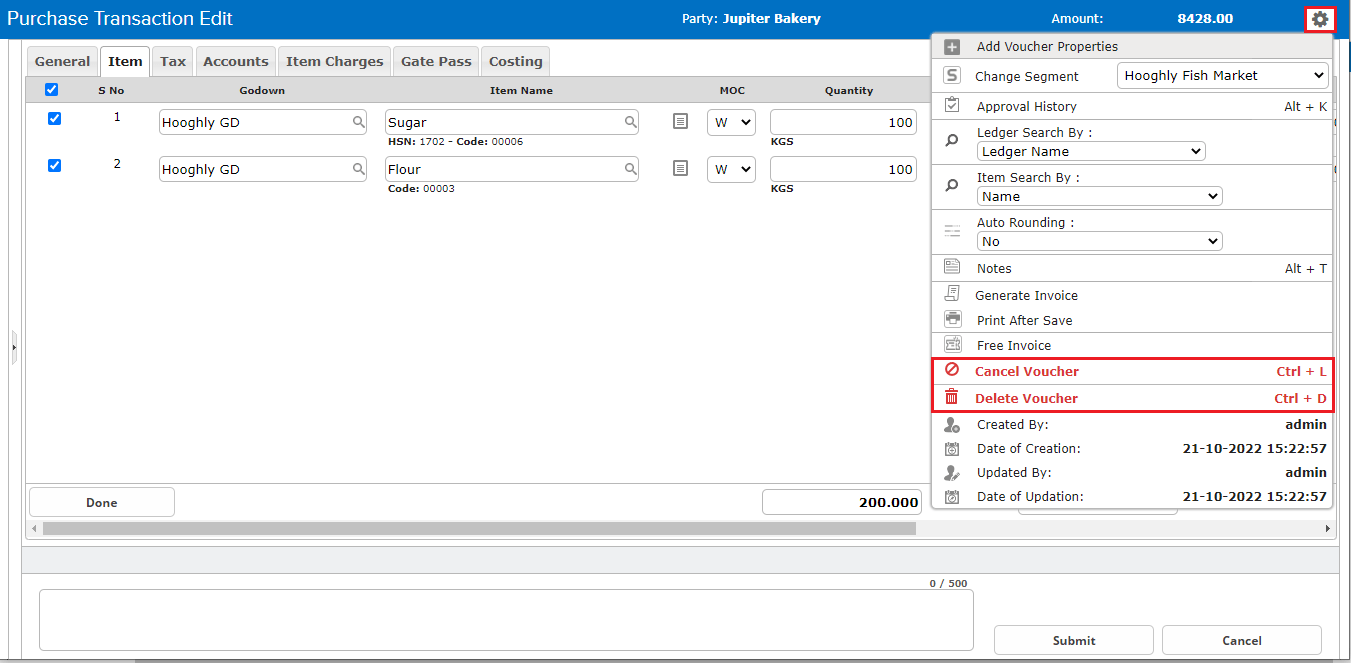Purchase means getting the ownership of any goods or services, by paying the predetermined price of them. it may be in cash or credit.
How To Create a Purchase Entry (Automatic GST)
STEP 1: Go to Transactions⇒ Inventory ⇒Purchase Cycle⇒ Purchase

A purchase transaction entry page will open-
STEP 2: Fill in the following details:
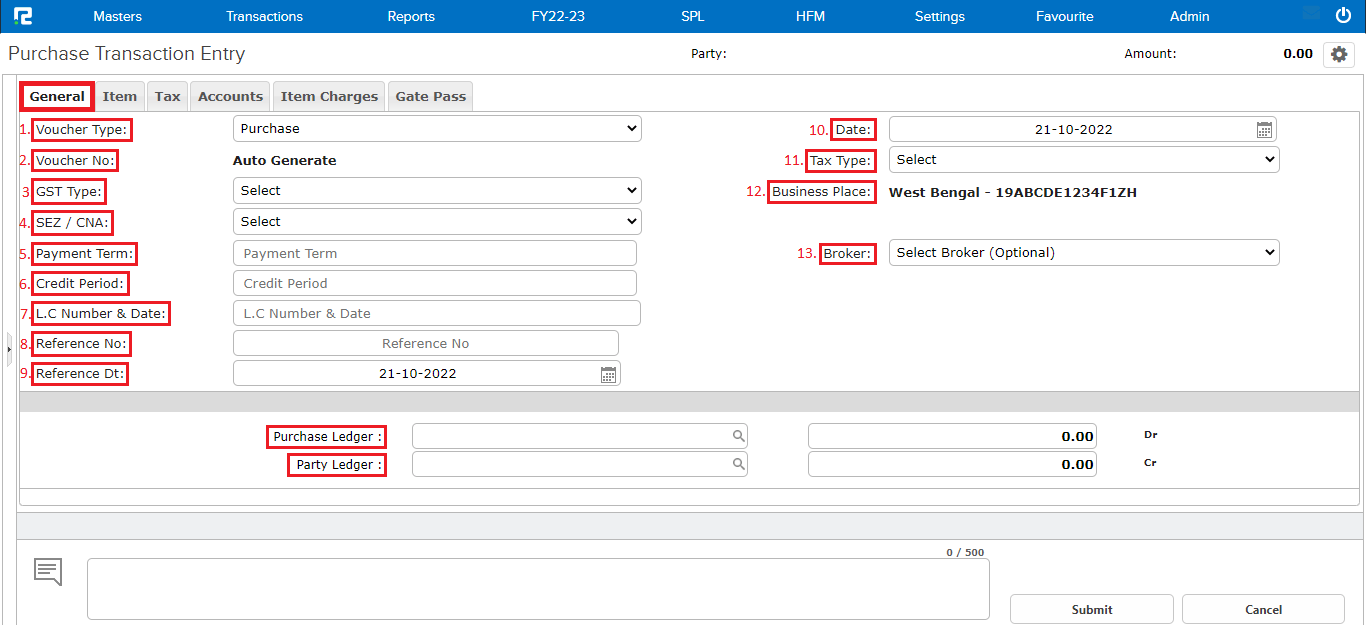
Under the general tab
1. Voucher type– Select the appropriate voucher type from the dropdown list displayed.
2. Voucher number– Based on the numbering pattern set in the voucher master, this number will be displayed.
3. GST type– This is auto-fetched based on the company’s business place & party’s state.
4. SEZ/CNA– If the billing party belongs to an SEZ location then select SEZ or if GST input credit is not available then select CNA from the dropdown list.
5. Payment term– If there is a payment term agreed upon, it can be added here.
Note: It should not exceed 250 words.
6. Credit Period– Add the credit period i.e. credit days.
7. LC number and date– Add the LC number and date, if any.
8. Reference date– Enter the vendor’s invoice date.
9. Reference number– Enter the vendor’s invoice number.
Note: Ref number is mandatory.
10. Date– Set the voucher date.
11. Tax type– This is auto-filled.
12. Business place– Usually, it is auto-selected, but in case of multiple business places, this needs to be selected from the dropdown.
13. Broker– Search the broker ledger, if any.
Search and enter the Purchase & Vendor ledger in the respective fields, namely, Purchase & Party.
STEP 3: Once the party ledger is added, the page will be redirected to the ITEM tab-

Fill in the item-related details as per the instructions-
1. Godown– Type the name of the Godown/Warehouse location for the stock inflow.
2. Item name– Search the item name.
3. Batch– Enter the batch number of the stock. This field is applicable only where the batch is enabled.
4. MOC – Method of Calculation or MOC gets activated only where alt qty is active.
There are 3 options for calculating the item-wise value:
a) W – This multiplies the Qty with Rate
b) P– This multiplies the Alt Qty with Rate
c) F – If F is chosen, then the amount needs to be filled, and the rate is calculated by dividing Amount by Qty.

5. Quantity– Enter the purchase quantity.
6. Alt unit– Alternative units of measurement, needs to be configured in item master.
7. Alt qty– To be entered only if an alternative unit of measurement is enabled.
8. Rate– Enter the per unit rate of the item.
9. Discount (%)– Enter the discount percentage, if received.
10. Gross amount– The gross amount is the value derived by multiplying Qty with Rate and adjusting the discount with the same.
11. Net amount-In case of GST-inclusive items, the net amount column displays the value excluding GST.
To insert multiple items, click on the “+” icon available at the end of each item row.
STEP 4: CLICK on the “COMPUTE” button present at the left bottom side.
The page will be redirected to the “ACCOUNTS” tab.
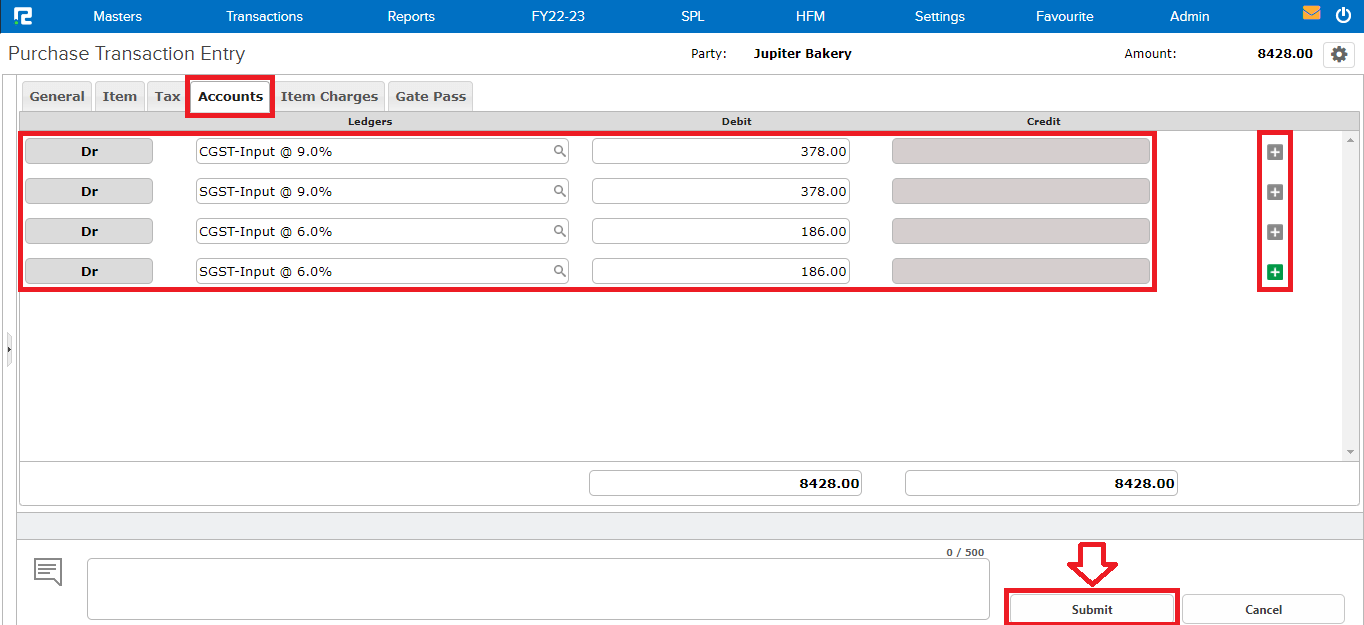
STEP 5: The tax ledgers will auto-populate in the accounts tab. To add any additional ledgers, click on the “+” icon or press enter to add a new row.
Note: To use Automatic GST computation, configure GST Calculation as Automatic in Voucher Master.
STEP 6: Click on the “SUBMIT” button, and the entry will be saved successfully.
How To Create a Purchase Entry (Manual GST)
STEP 1: Go to Transactions⇒ Inventory ⇒Purchase Cycle⇒ Purchase
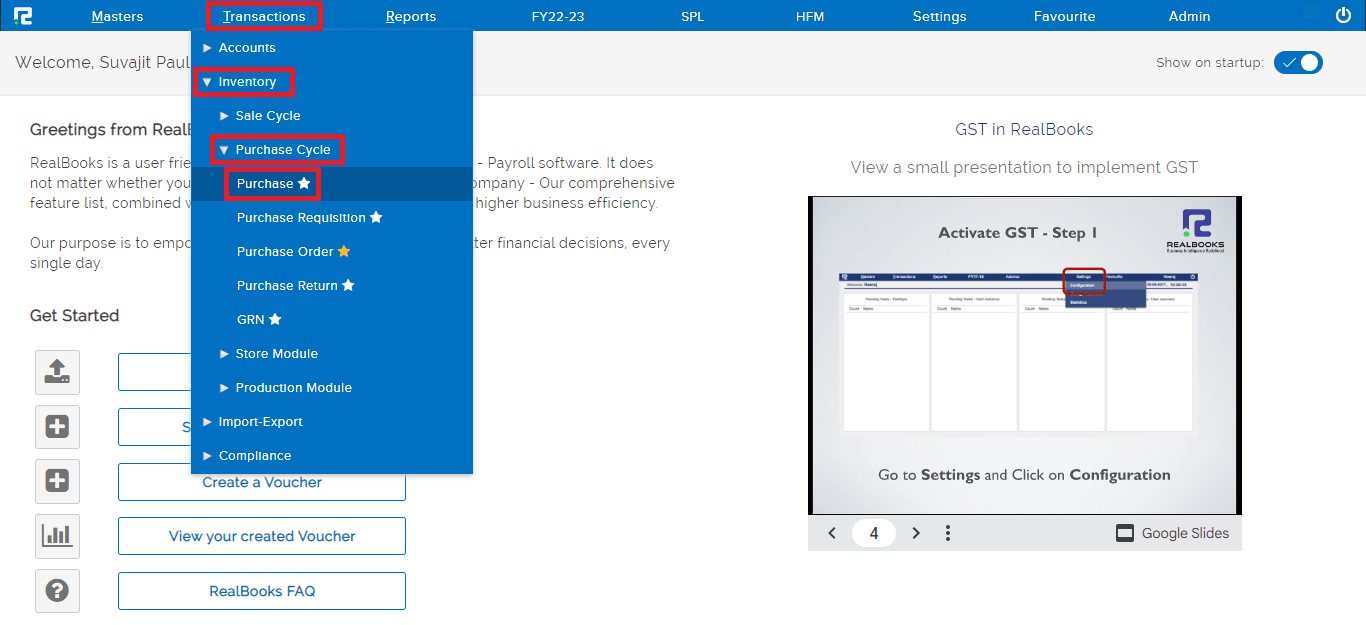
A purchase transaction entry page will open-
STEP 2: Fill in the following details:
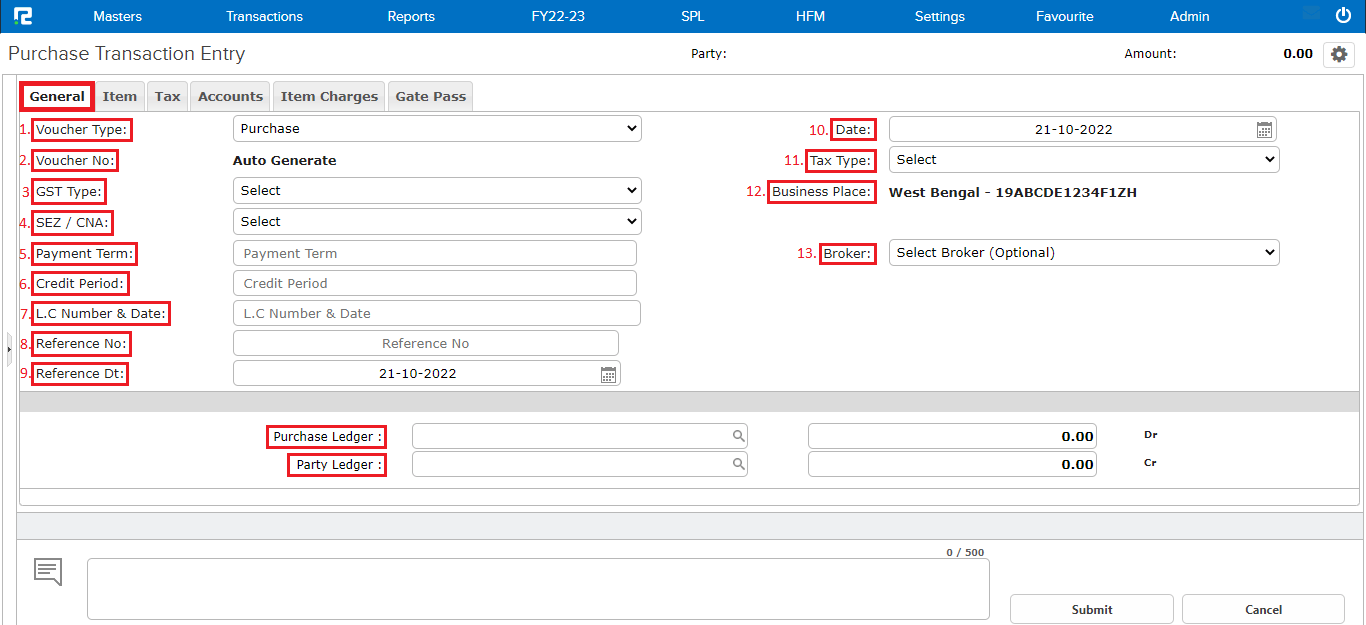
Under the general tab
1. Voucher type– Select the appropriate voucher type from the dropdown list displayed.
2. Voucher number– Based on the numbering pattern set in the voucher master, this number will be displayed.
3. GST type– This is auto-fetched based on the company’s business place & party’s state.
4. SEZ/CNA– If the billing party belongs to an SEZ location then select SEZ or if GST input credit is not available then select CNA from the dropdown list.
5. Payment term– If there is a payment term agreed upon, it can be added here.
Note: It should not exceed 250 words.
6. Credit Period– Add the credit period i.e. credit days.
7. LC number and date– Add the LC number and the voucher date, if any.
8. Reference date– Enter the vendor’s invoice date.
9. Reference number– Enter the vendor’s invoice number.
Note: Ref number is mandatory.
10. Date– Set the voucher date.
11. Tax type– This is auto filled.
12. Business place– Usually, it is auto selected, but in case of multiple business places, this needs to be selected from the dropdown.
13. Broker– Search the broker ledger, if any.
Search and enter the Purchase & Vendor ledger in the respective fields, namely, Purchase & Party.
STEP 3: Once the party ledger is added, the page will be redirected to the ITEM tab-

Fill the item related details as per the instructions-
1. Godown– Type the name of the Godown/Warehouse location for the stock inflow.
2. Item name– Search the item name.
3. Batch– Enter the batch number of the stock. This field is applicable only where batch is enabled.
4. MOC – Method of Calculation or MOC gets activated only where alt qty is active.

There are 3 options for calculating the item-wise value:
a) W – This multiplies the Qty with Rate.
b) P– This multiplies the Alt Qty with Rate.
c) F – If F is chosen, then the amount needs to be filled, and the rate is calculated by dividing Amount by Qty.
5. Quantity – Enter the base order quantity.
6. Alt unit– Alternative units of measurement, needs to be configured in the item master.
7. Alt qty– To be entered only if an alternative unit of measurement is enabled.
8. Rate– Enter the per unit rate of the item.
9. Discount (%)– Enter the discount percentage, if received.
10. Gross amount– The gross amount is the value derived by multiplying Qty with Rate and adjusting the discount with the same.
11. Net amount-In case of GST-inclusive items, the net amount column displays the value excluding GST.
To insert multiple items, click on the “+” icon available at the end of each item row.
STEP 4: CLICK on the “DONE” button present at the left bottom side.
The page will be redirected to the “TAX” tab.
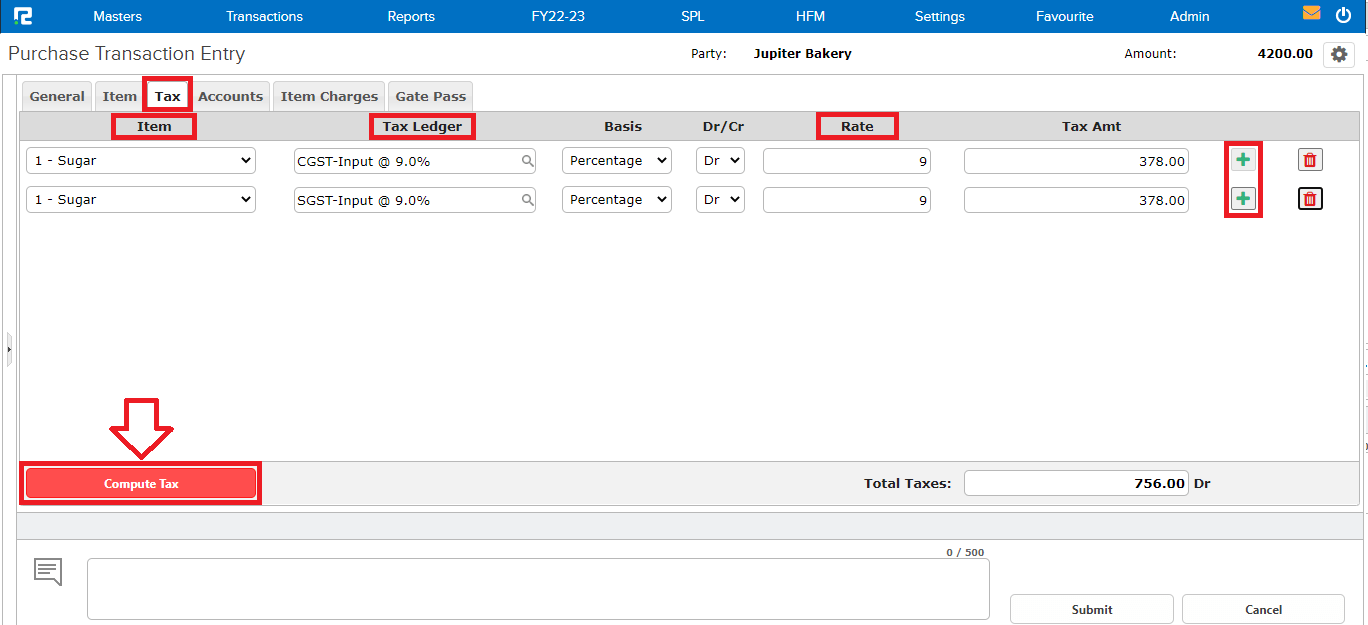
STEP 5: Fill in the following details-
1. Item name– Select the item on which tax has to be charged.
2. Tax ledger– Search the rate-wise GST ledger which is applicable for the selected item.
3, Rate– Add the GST rate at which the tax has to be calculated.
The final amount will be calculated accordingly.
To insert multiple items, click on the “+” icon available at the end of each item row.
Note: In case of intra-state GST, the tax on the same item needs to be charged twice, once for CGST & once for SGST.
STEP 6: CLICK on the “COMPUTE TAX” button and you will be redirected to the “ACCOUNTS” tab.
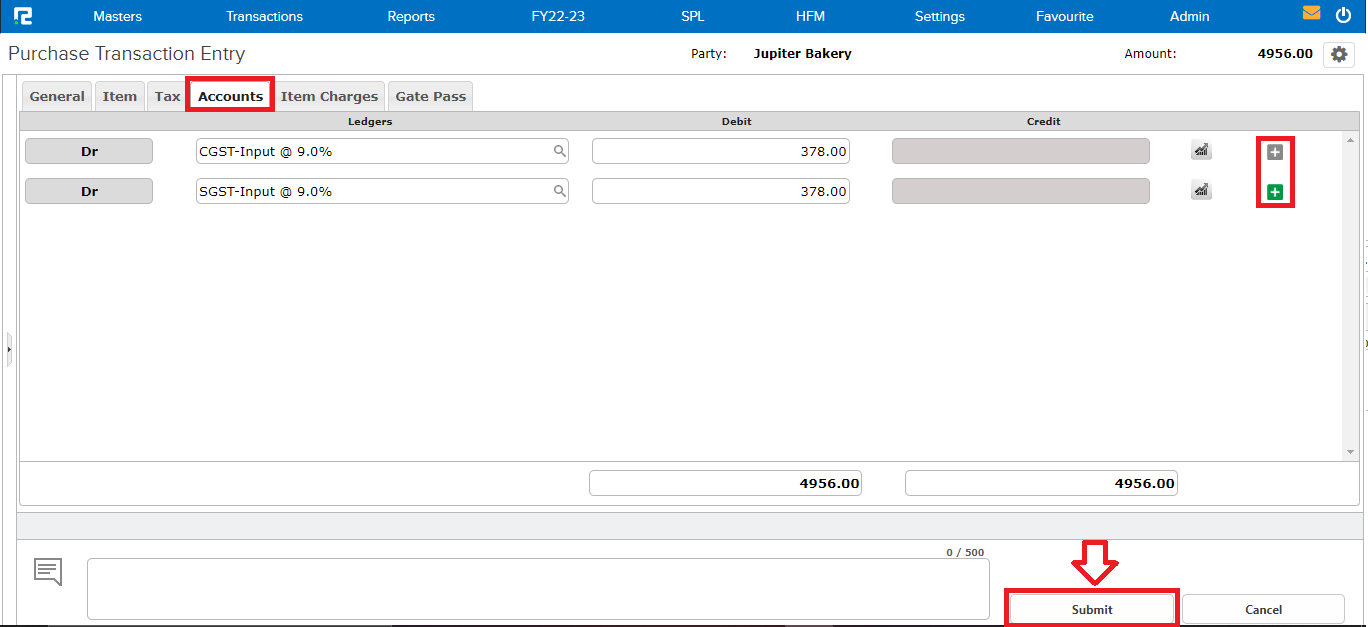
STEP 7: The tax ledgers will auto-populate in the accounts tab. To add any additional ledgers, click on the “+” icon or press enter to add a new row.
STEP 8: Click on the “SUBMIT” button, and the entry will be saved successfully.
How to Edit a Purchase Entry
Users can view, edit, cancel, or delete a purchase entry from almost every report available in the system. For ex: the daybook, purchase register, etc.
TRANSACTION EDIT VIA DAY BOOK
Go to Reports⇒ Accounts⇒ Daily reports⇒ Day Book
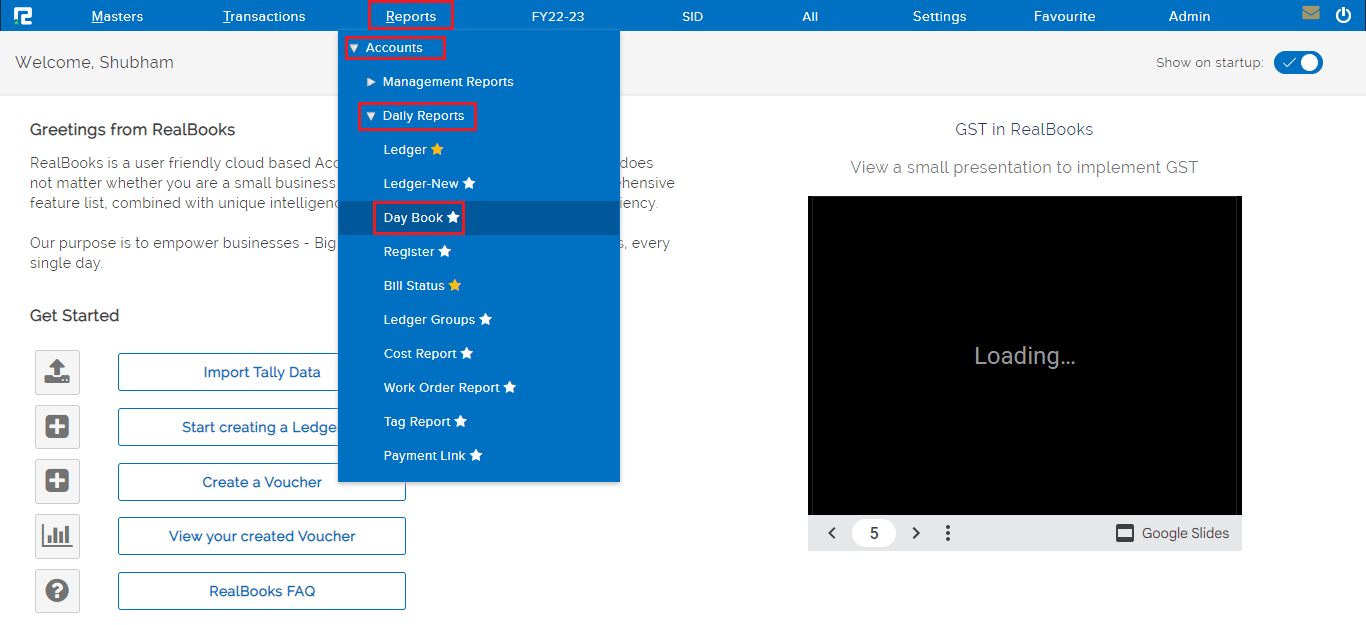
To edit an entry, click on the settings icon on the right-hand side of the entry & click on the Voucher Edit option, or alternatively, press Enter on the keyboard.
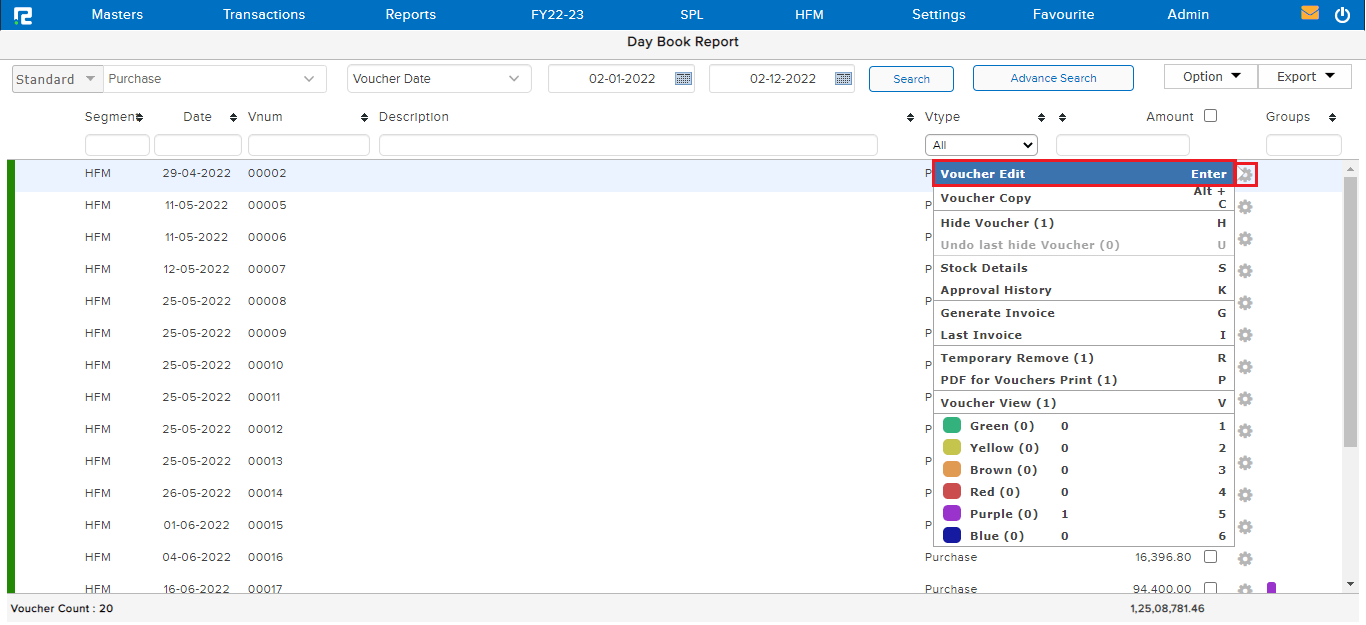
Do the necessary changes as required and click on the submit button.
TRANSACTION EDIT VIA PURCHASE REGISTER
Go to Reports⇒ Inventory⇒ Purchase Cycle⇒ Purchase Register
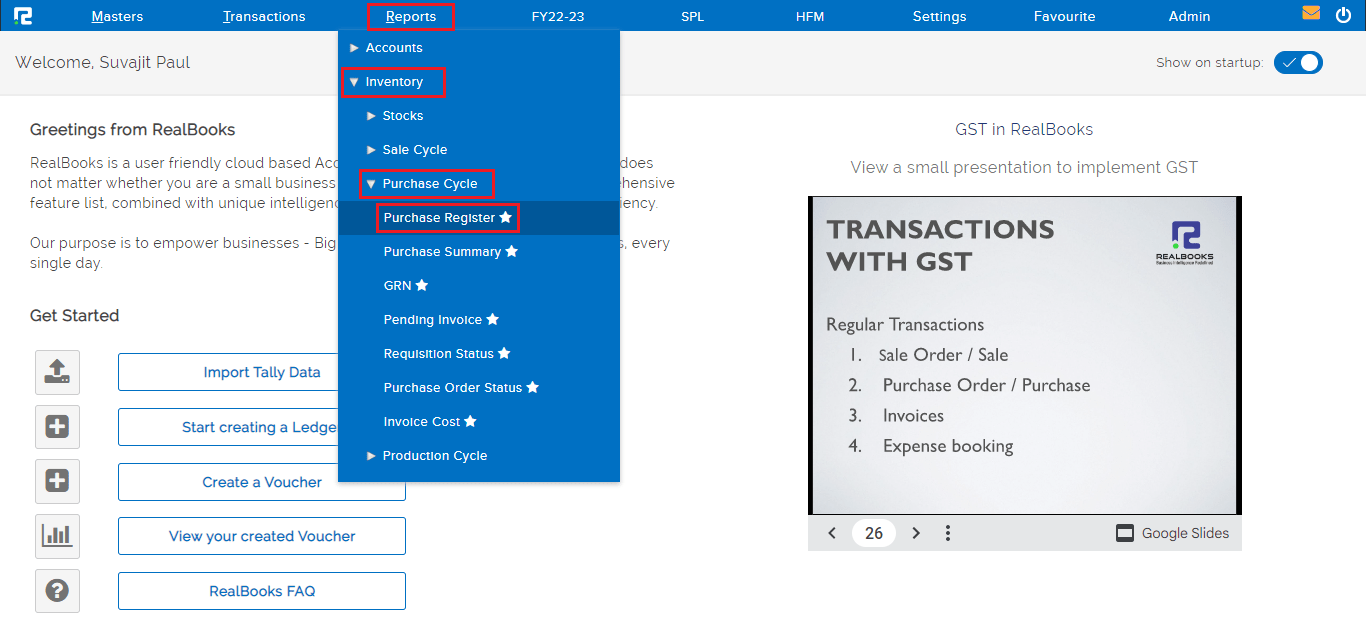
To edit an entry, click on the settings icon on the right-hand side of the entry & click on the Edit option, or alternatively, press Enter on the keyboard.
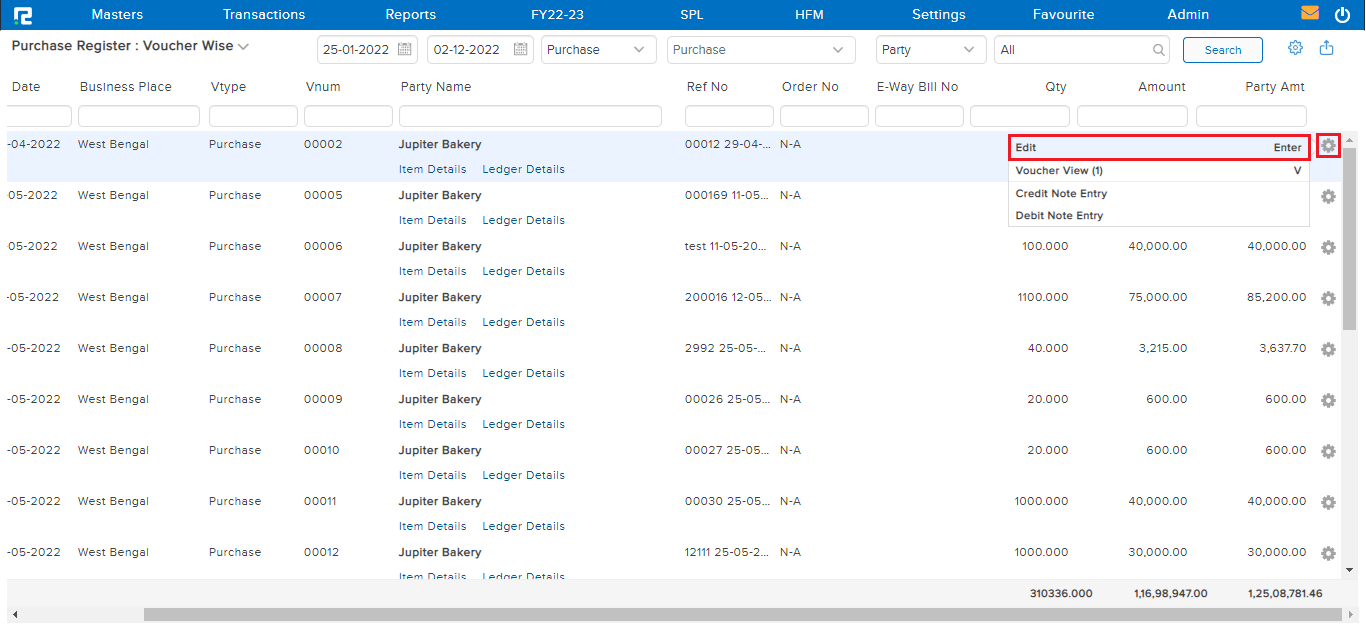
Do the necessary changes as required and click on the submit button.
How to Delete or Cancel an Entry
DELETE/CANCEL– To delete/cancel an entry, open the entry in edit mode, then go to the Settings icon on the right-hand side of the page. From the dropdown menu select the cancel/delete voucher as required, enter the reason for cancellation/deletion, and then click on cancel/delete.
